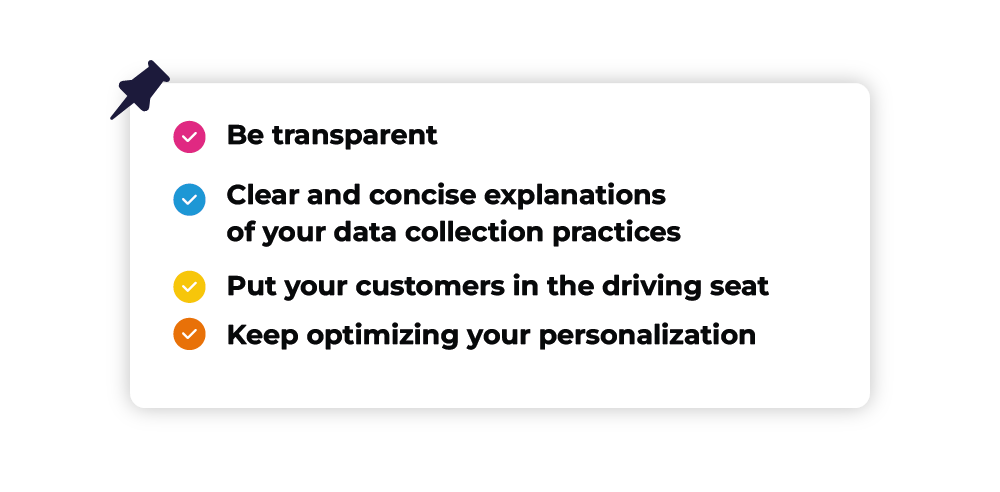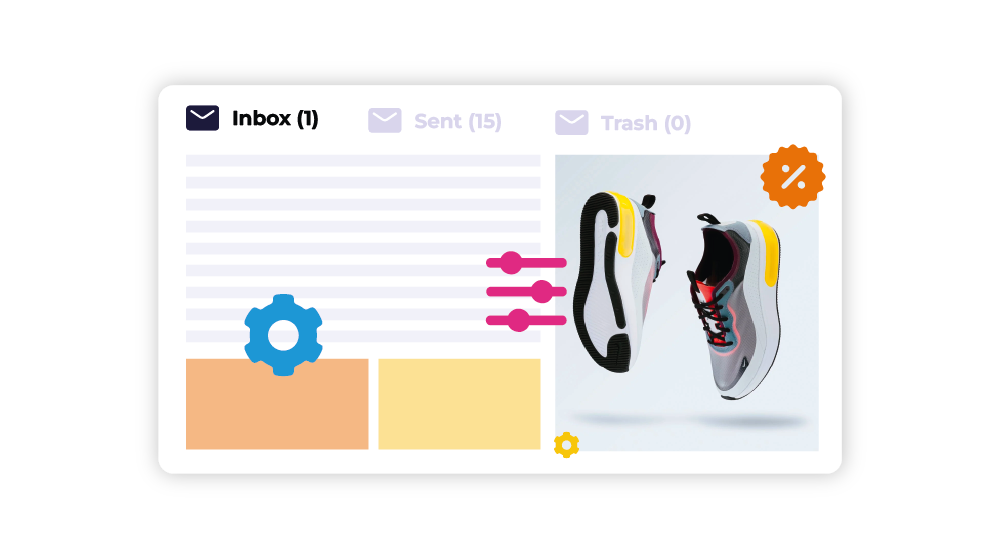Find the Balance Between Privacy and Personalisation in Your Campaigns


This helpful guide shows how eCommerce businesses can find common ground between privacy and personalisation in their digital marketing campaigns.
Any business with a strong digital marketing strategy will know the importance of personalisation. By working with user data, companies can deliver tailored messages and experiences that help to attract and retain customers. 90% of the best marketers have said that personalisation improves profitability.
However, consumers are increasingly wary of companies that collect and use their personal data without their consent. These concerns have led to more stringent privacy regulations, such as GDPR and Google’s plan to end third-party cookies on Chrome. Businesses have to be careful to follow these regulations and make their customers feel safe and valued.
Striking a balance between personalisation and privacy is, therefore, a crucial part of any digital marketing strategy as more and more business takes place online. Whether you're a small business owner or a marketer at a large corporation, learning how to find the common ground will let you develop effective strategies that respect your customer's privacy.
Why are privacy and personalisation such big issues for companies?
Every business that works online, from software services like PDFPlatform to eCommerce advertisers, has to consider how to protect their customers' data. At the same time, however, data collection techniques such as cookies and tracking pixels have become integral to digital marketing strategies, with personalisation used for a better competitive edge.
User data allows adverts and marketing messages to be tailored specifically to the customer. Whether this means that they directly address the user through bespoke content or a target demographic that is more receptive to certain marketing, modern digital marketing strategies have to take personalization into account.
However, with high-profile data breaches and scandals making headlines, consumers are more cautious about who they share their personal information with. Companies need to be transparent about how they collect and use data or risk losing consumer trust.
There are also legal implications for companies that fail to protect user privacy. Many countries have enacted data protection laws requiring businesses to obtain user consent before collecting data and to allow users to opt out of data collection. Failure to comply with these laws can result in hefty fines and reputational damage.
As well as this, there is a risk of consumer backlash if companies are perceived to be using personal data in an intrusive or unethical way. This can lead to negative reviews, social media backlash, and even boycotts, which can harm a company's reputation and bottom line.
Therefore, it's more important than ever that you find the right balance between the demands of privacy and personalisation. But how can you do this in your digital marketing campaigns?
How to strike a balance between privacy and personalisation
Having the right company mindset is invaluable in finding the right middle ground between privacy and personalisation. You have to be sure that protecting customer privacy is at the center of every action involving user data.
However, there are three key principles that will ensure that you can see the benefits of personalisation in your marketing campaigns while also prioritizing privacy:
Start preparing for the end of third-party cookies
In an attempt to address rising concerns about privacy Google will be ending the use of third-party cookies on Chrome in 2024. This will help put consumers at ease, but will make personalisation that much harder.
Without the use of third-party cookies to guide the way, companies will have to find other methods to attract and retain customers. This may mean relying on first-party cookies to improve site optimization or gather data on user experience or it could mean getting to grips with Google’s Topics API which will form part of their Privacy Sandbox.
Consider adapting your strategy now to prepare for the change. Think about setting up enhanced conversions for web with Google, encouraging user accounts to help you collect data, as well as things like newsletter creation. Get your team together and start brainstorming ideas.
Whatever strategy you choose, it’s important to get ahead of the change and start putting things in place now. This way your business will be best placed to continue to deliver a personalised service while protecting your customers’ data.
Be transparent with customers
Customers want to know what data you collect about them and how you will use it. By being transparent, companies can build trust with their customers and reassure them that their personal data is being used ethically and responsibly.
You should provide clear and concise explanations of your data collection practices on your website and your marketing materials. This could include details about what data you are collecting, how it is collected, and how you'll use it. However, keep this simple, short, and snappy!
Say, for example, that you offer free downloads of a settlement letter template and ask for an email address to send it to. You should be upfront about if you will use that email address in the future. A customer who receives unexpected marketing emails after a simple download might become frustrated and unlikely to use your platform again.
Put your customers in the driving seat
As well as being transparent, you should give customers full control of how much data they want to share with you. You can do this by allowing customers to access, edit, and delete their data, as well as opt out of data collection altogether.
While personalised PPC adverts can be effective, some customers can find them unsettling; it is good practice to include a visible opt-out button in these marketing materials. This demonstrates your commitment to privacy while it also improves customer experience.
By giving your customers control over their data, you’ll be able to both improve your own data privacy practices and visibly demonstrate how much you value privacy to your customers.
As well as this, you should provide regular updates to customers on their data usage policies and any changes that may impact users' privacy. This could be done through email notifications, blog posts, or other communication channels.
Transparency is key to building trust with customers. By being transparent about data collection practices, companies can balance personalisation and privacy to ensure their customers feel comfortable sharing their data.
Keep optimizing your personalisation
You should always test your marketing strategies and find areas to improve. As well as helping to improve your marketing success rates, this will ensure that you are using customer data effectively.
Marketeers should use data analysis to identify areas where they may be collecting unnecessary data and adjust their practices accordingly. Similarly, you could find out what level of personalisation is most effective for your customers. This allows you to avoid using personal data when it isn't leading to positive interactions.
Privacy and personalization: a reconcilable set of demands
Finding common ground between personalization and privacy may seem challenging. While personalization can enhance the customer experience and improve marketing success rates, businesses must also ensure they respect customer privacy. Failure to do so can result in loss of trust, legal repercussions, and reputational damage.
However, you can reconcile these important demands of any digital marketing strategy. The three key principles of transparency, customer control, and continuous optimization can help companies strike the right balance between personalisation and privacy.
By keeping these in mind when designing your digital marketing campaigns, you can build trust with your customers, respect their privacy, and deliver personalised experiences that will keep them coming back.
Sign up for a free account to explore Channable's solutions and chat with an expert digital marketing professional today.
Want more like this?
Want more like this?
Insight delivered to your inbox
Keep up to date with our free email. Hand picked whitepapers and posts from our blog, as well as exclusive videos and webinar invitations keep our Users one step ahead.
By clicking 'SIGN UP', you agree to our Terms of Use and Privacy Policy


By clicking 'SIGN UP', you agree to our Terms of Use and Privacy Policy
Other content you may be interested in
Categories
Categories
Categories

Want more like this?


Want more like this?
Insight delivered to your inbox
Keep up to date with our free email. Hand picked whitepapers and posts from our blog, as well as exclusive videos and webinar invitations keep our Users one step ahead.
By clicking 'SIGN UP', you agree to our Terms of Use and Privacy Policy











